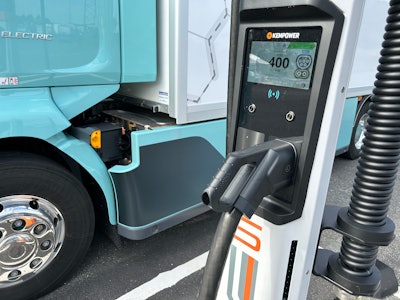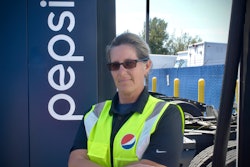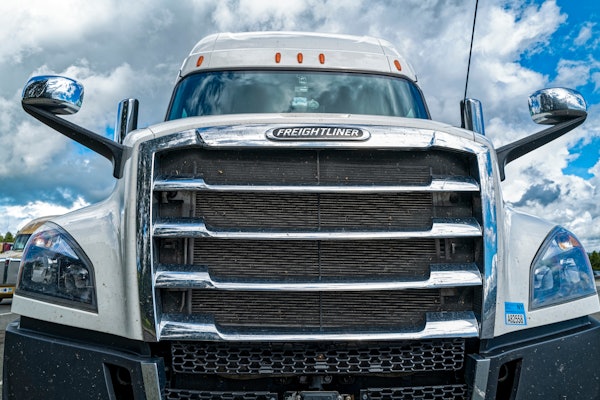
"A journey of a thousand miles begins with a single step." – Chinese proverb
As of mid-last year, 867 zero-emission heavy trucks have been deployed across the U.S., according to CALSTART's third update to its comprehensive market report, Zeroing in on Zero-Emission Trucks (ZET), which focuses on the steadily increasing adoption of zero-emission medium- and heavy-duty trucks throughout the country.
The noteworthy increase in ZET adoption since the previous version of this report in May 2023 is due in part to the increased availability of models from all OEMs. According to CALSTART, there are now more than 160 ZET models available in the U.S. from more than 40 OEMs.
[Related: California backs off drayage diesel ban – for now]
The zero-emission medium-duty truck market has the most options with 73 models available, followed by heavy-duty trucks with 32 and cargo vans with 23 models. The cargo van segment, however, represents more than 80% of all ZET deployments.

"My biggest takeaway from the latest update is just how quickly this market is growing," Jessie Lund, CALSTART’s deputy director of truck technology told Clean Trucking. "Especially considering the data only covers the first half of 2023, it's encouraging to see the 'hockey stick' exponential growth. Deployments have increased by an order of magnitude since the first iteration of this report (January 2022) – and all that in spite of a global pandemic, supply chain challenges and economic volatility. This tells me that the market, while still relatively small compared to the overall truck market, has some serious momentum."
Approximately 14,400 ZE cargo vans have been deployed in the U.S., 11,835 of which were deployed in the first half of 2023 — a 461% increase in deployments from CALSTART"s previous report. Following cargo vans with regard to total ZET deployments are yard tractors (1,134), HD trucks (867), medium-duty step vans (843), medium-duty trucks (442) and refuse trucks (48).
[Related: Analysis: California not ready for its own EV mandates]
Heavy-duty trucks were the only other segment to see its first-half 2023 deployment numbers more than double from the previous report, boasting a 250% increase. These trucks have primarily been deployed in urban/regional or drayage duty cycles, and California continues to lead in heavy ZET deployments due to ambitious targets, initiatives and incentives that support reducing emissions from the heavy vehicle segment. California, however, with approximately 3,075 ZETs deployed to date, accounts for less than one-fifth of total U.S. ZET deployments.
The fact that ZETs have already been deployed in every state, while surprising Lund said, speaks to a strong market for battery-electric trucks.

"I don't want to call out any particular states, but I definitely didn't expect to see ZETs operating in all these states – especially not at the volumes that they are," she said. "It's telling that even states with no ZET mandates or incentives have seen ZETs put on the road within their borders. I think this speaks to the fact that fleets can see the writing on the wall. They know that ZETs are the future, and they see a path to more business, or at least maintaining business, because their customers are increasingly demanding their goods be hauled by ZETs."
Regulations and incentives continue to be primary drivers of ZET adoption. States that had adopted the Advanced Clean Trucks (ACT) regulation as of June 2023 account for 38% of all ZET deployments, despite making up just 25% of all truck registrations. CALSTART expects the trend of ZET deployments to continue to rise on the heels of more state and federal regulatory pressure and the availability of incentives and grants.
In researching the trends driving ZET growth, Lund said CALSTART was pleasantly surprised to see the sheer scale of investment going into charging infrastructure, specifically for trucks.
"Based on conversations with CALSTART members, we had a general sense going into this update that the industry had made a lot of headway here, but again, it's encouraging to see the number of new projects coming online to support this transition – especially around shared and public charging, which is vital to ensuring the transition is equitable and doesn't leave behind smaller fleets," she said.
Lund said she was also pleased with the number of state and utility incentive programs available to support ZET deployments. While certain states like California and New York tend to get a lot of call-outs for their incentive programs in the press and at industry events, "there are a significant number of lesser-known, many of them newer, funding pots that fleets can draw on," Lund said.












